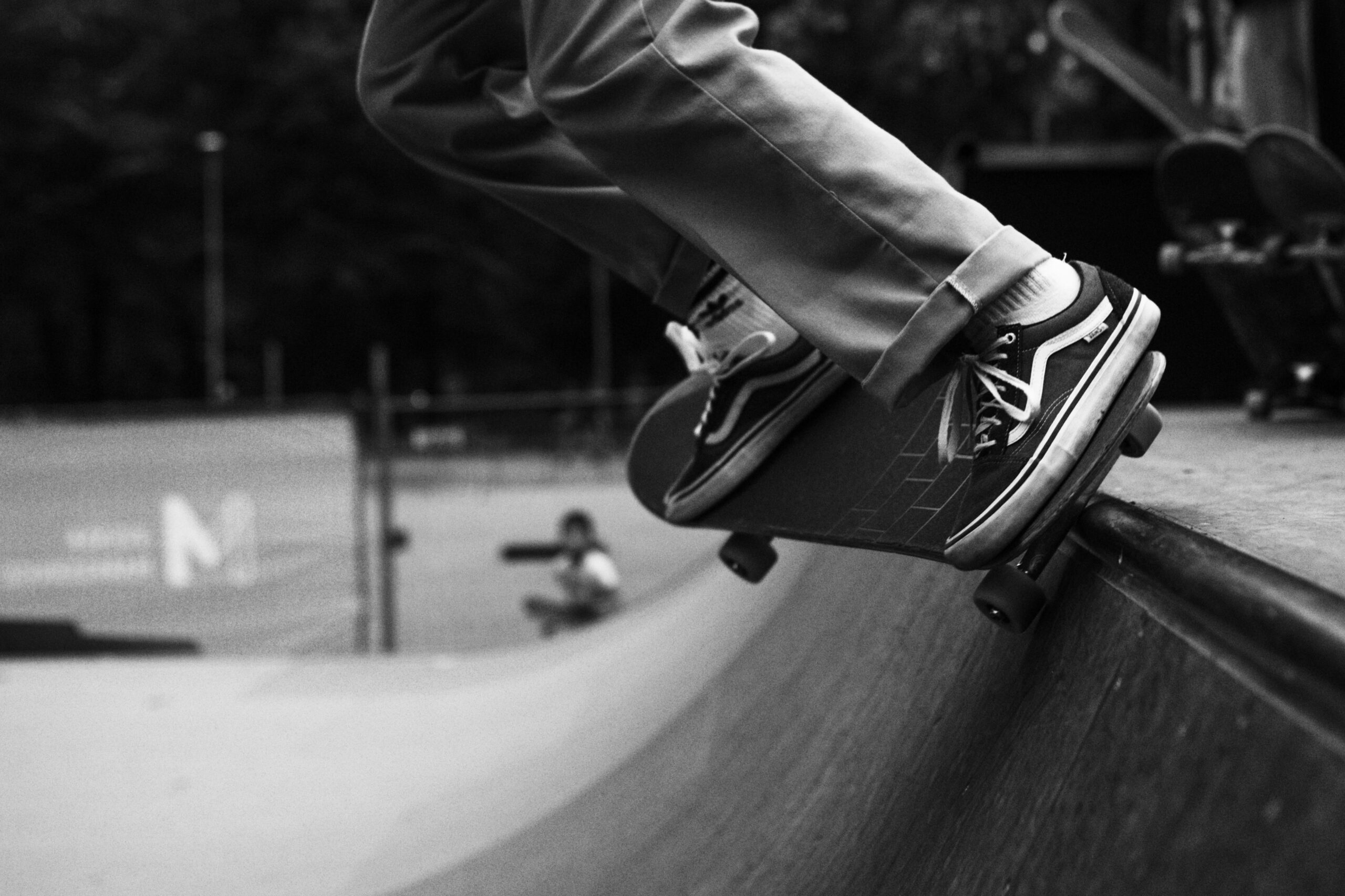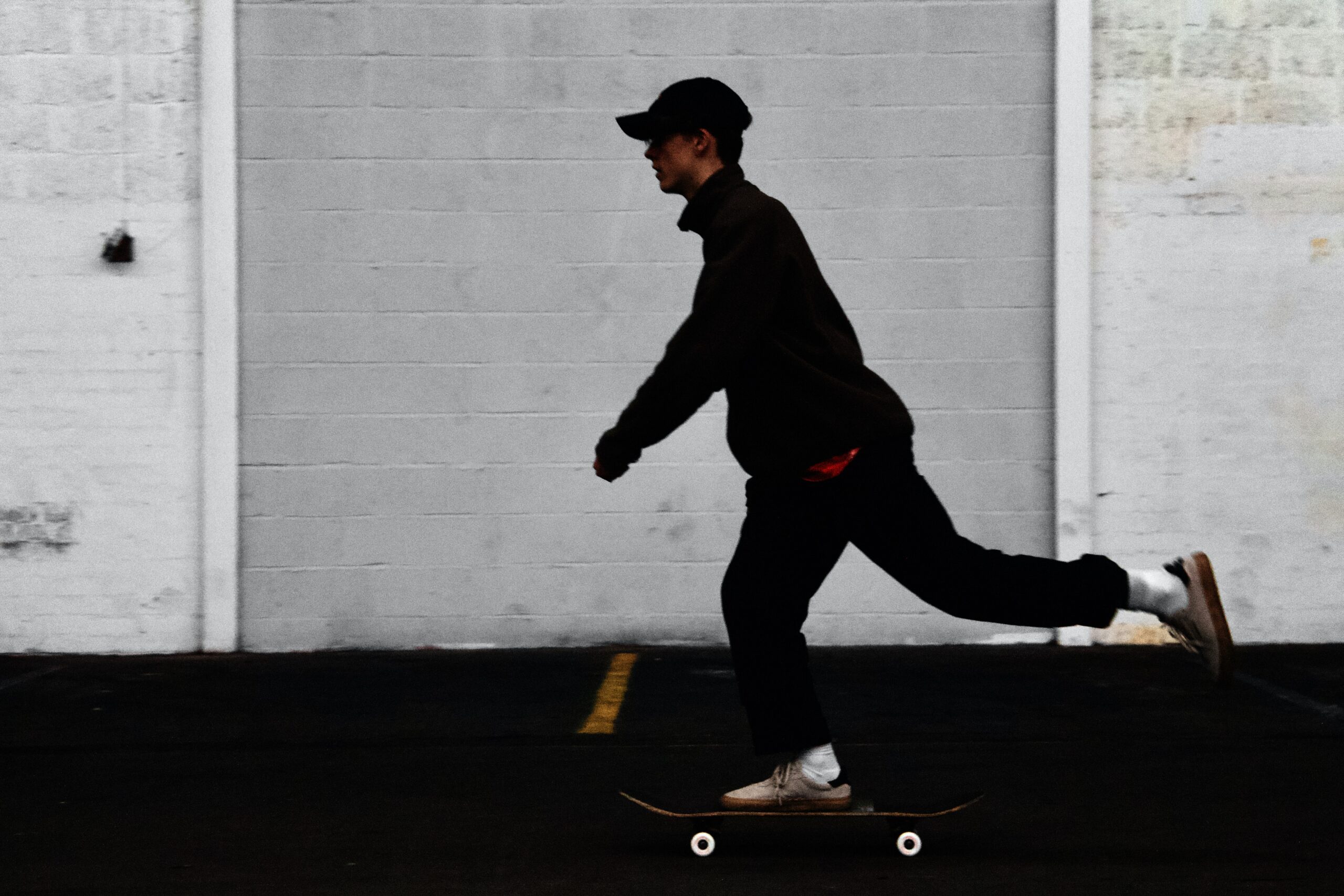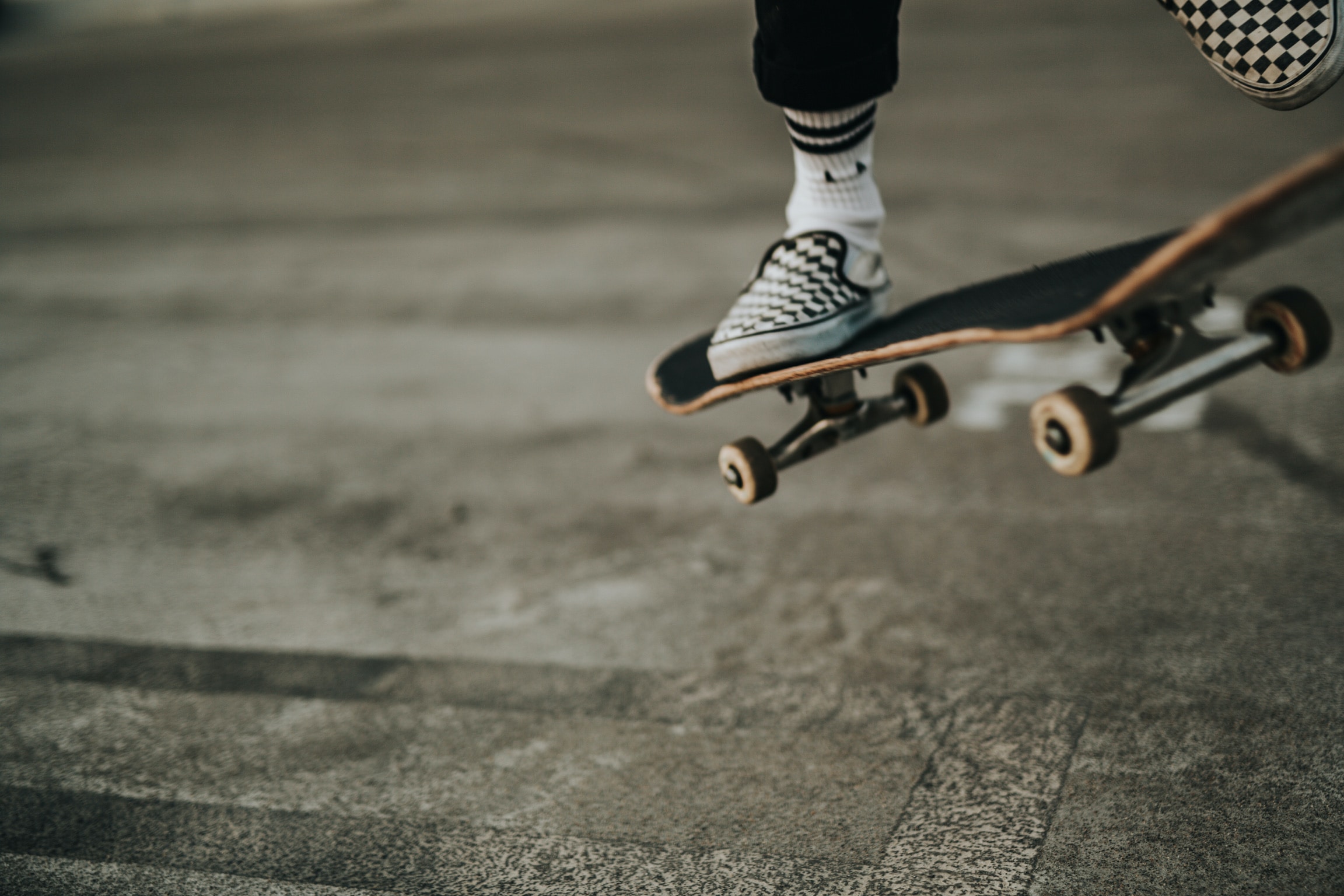So you want to know the secret technique for mastering the elusive skateboard disaster flips? Look no further! In this article, we will uncover the key elements that will help you unlock the incredible world of this exhilarating trick. From finding the perfect balance to understanding the subtle nuances of timing and body positioning, we’ve got you covered. Get ready to take your skateboarding skills to new heights and impress your friends with your flawless disaster flips!

Equipment
Choosing the right skateboard
When it comes to skateboarding, choosing the right skateboard is crucial. A skateboard consists of multiple components, such as the deck, trucks, wheels, and bearings. The deck is the wooden board on which you stand, and it comes in various sizes and shapes. Make sure to choose a deck that suits your height and riding style. The trucks are the metal axles that hold the wheels in place, and they should match the width of your deck. Additionally, consider the hardness and diameter of the wheels, as these factors affect your speed and maneuverability. Lastly, don’t forget to select high-quality bearings that allow for smooth and fast rides.
Getting the right grip tape
Grip tape is an essential part of your skateboard setup as it provides traction for your feet. When choosing grip tape, look for one that has a strong adhesive and a textured surface. The texture ensures a firm grip, especially when performing tricks or riding at high speeds. Some skateboarders prefer a coarse grip tape, while others opt for a finer texture. Ultimately, it comes down to personal preference, but make sure to choose a grip tape that suits your style and comfort.
Using appropriate footwear
Skateboarding requires footwear that provides both comfort and support. Opt for shoes with a flat sole, as they enhance your board feel and control. Flat-soled shoes allow your feet to have direct contact with the skateboard, facilitating better balance and maneuverability. Additionally, choose shoes that offer ankle support to minimize the risk of injuries. Avoid wearing bulky or loose shoes that might hinder proper foot movement. Remember, the right footwear can greatly impact your skateboarding experience.
Basic Skateboarding Skills
Maintaining balance
Maintaining balance is the foundation for all skateboarding skills. Start by standing on your board with your feet shoulder-width apart, parallel to each other. Keep your knees slightly bent to absorb any vibrations or impacts while riding. As you progress, practice weight shifting by leaning forward and backward. Balancing on your skateboard is all about finding your center of gravity and making slight adjustments to maintain stability.
Perfecting ollies
Ollies are one of the most fundamental tricks in skateboarding. Start by placing your back foot on the tail of the skateboard and your front foot near or slightly behind the front bolts. As you pop the tail down with your back foot, simultaneously slide your front foot forward and jump, using the pop to lift the board off the ground. Bring your knees up towards your chest to level out the skateboard in the air. Practice ollies consistently to improve your timing and height.
Improving kickflips
Kickflips are a more advanced trick that requires mastering the ollie motion while adding a flick of your front foot to make the board spin. Start with your feet in the ollie position, but with your front foot angled slightly towards the heel edge of the skateboard. As you pop the tail, simultaneously slide your front foot off the edge of the board, using the flick to initiate the spin. Keep practicing the motion until you can consistently land kickflips with control.
Mastering heelflips
Heelflips are a variation of kickflips where the board spins in the opposite direction. Start with your feet in the kickflip position, but with your front foot angled slightly towards the toe edge of the skateboard. As you pop the tail, simultaneously slide your front foot off the edge of the board, using your heel to initiate the spin. Remember to keep your shoulders aligned with the board and your weight centered. With practice, you’ll be able to master heelflips and add some style to your skateboarding repertoire.
Understanding the Disaster Flip
Definition and technique
The Disaster Flip, also known as the Wraparound Flip, is a trick where the skateboard does a full 360-degree rotation along the long axis of the board while flipping. This trick combines the rotation of a kickflip or heelflip with an extra spin, resulting in an impressive and visually appealing maneuver. To execute a Disaster Flip, you need to have a solid foundation in kickflips or heelflips and be comfortable with spinning your board.
Different types of disaster flips
There are various variations of the Disaster Flip, each with its own unique style and difficulty level. The regular Disaster Flip involves a full 360-degree rotation while executing a kickflip or heelflip. Another variation is the Switch Disaster Flip, where the trick is performed with the opposite foot positioning. There’s also the Nollie Disaster Flip, which combines a nollie with the 360-degree rotation and flip. Each type of Disaster Flip requires a mastery of the basic techniques involved and adds an extra challenge to your skateboarding arsenal.
Proper Foot Positioning
Front foot placement
The positioning of your front foot plays a crucial role in executing a Disaster Flip. Start with your front foot angled diagonally across the board, with the ball of your foot near or slightly behind the front bolts. Having your foot at an angle helps with initiating the flip and controlling the rotation. Experiment with different angles to find the most comfortable and effective position for you.
Back foot placement
The positioning of your back foot is equally important in performing a Disaster Flip. Place your back foot on the tail of the skateboard, just like when executing an ollie or kickflip. Position it so that your toes are hanging slightly off the edge, allowing for better control when initiating the flip. Finding the right balance between the edge of the tail and the position of your toes is key to executing a smooth and controlled Disaster Flip.

Executing the Disaster Flip
Approaching the obstacle
Before attempting a Disaster Flip, make sure you have a clear understanding of the obstacle or surface you’ll be riding on. Approach the obstacle with an appropriate amount of speed, depending on its size and shape. Consider the angle at which you’ll ride up the obstacle, as this can affect the rotation and flip of the trick. Visualize your approach and ensure a smooth setup before initiating the trick.
Initiating the flip
To initiate the flip, use the same motion as you would when performing a kickflip or heelflip. Pop the tail down with your back foot while simultaneously sliding your front foot up and off the edge of the board. Use your front foot to flick and spin the board in the desired direction. The key is to combine the motion of the flip with the rotation, giving it a seamless and controlled appearance.
Controlling the board mid-air
As the skateboard rotates and flips, stay focused and maintain control of your body and the board. Keep your eyes on the landing spot as the trick unfolds. Use your arms and upper body to help with balance and control. Keep your shoulders squared with the board to maintain stability. Anticipate the timing of the rotation and make slight adjustments in the air to ensure a clean and complete rotation.
Preparing for landing
As the board completes its rotation, prepare yourself for landing. Spot the landing spot in advance and align your body accordingly. Bend your knees to absorb the impact and distribute your weight evenly to maintain balance. Keep your eyes focused on the board to help guide your landing. With practice, you’ll become more comfortable with the timing and execution of the Disaster Flip.
Building Confidence and Practice
Starting with low obstacles
When learning the Disaster Flip or any other advanced trick, it’s essential to start with low obstacles. Begin by practicing on flat ground or small ramps to hone your skills and build confidence. This approach allows you to master the technique and increase your success rate before attempting higher obstacles. Starting with manageable heights ensures a safe and gradual progression.
Gradually increasing obstacle height
Once you feel comfortable executing the Disaster Flip on smaller obstacles, gradually increase the height of the obstacles. This progressive approach allows your body to adapt to the increased difficulty and challenges your skills. Pushing yourself to tackle higher obstacles helps build confidence and improves your overall skateboarding abilities.
Repetition and muscle memory
Repetition is key when it comes to mastering any skateboarding trick, including the Disaster Flip. Practice the trick consistently, dedicating regular sessions to its execution. The more you repeat the motion and technique, the more your muscles remember and become familiar with the movements. Muscle memory plays a significant role in executing tricks consistently and with control.

Common Mistakes to Avoid
Improper foot positioning
One common mistake when attempting the Disaster Flip is improper foot positioning. Ensure that your front foot is angled correctly and that your back foot is placed securely on the tail. Failing to position your feet properly can result in instability and a lack of control during the trick.
Insufficient pop
Insufficient pop is another mistake to watch out for. The pop generated by your back foot is crucial for initiating the flip and rotation. Make sure to fully engage your back foot when popping the tail, providing enough force to launch the board into the air and create the desired spin.
Lack of commitment
The Disaster Flip requires commitment and confidence. Fear and hesitation can hinder your ability to execute the trick smoothly. Stay focused and fully commit to each attempt, believing in your abilities and trusting your skills. Remember that practice and perseverance are key to overcoming any challenges.
Safety Precautions
Wearing protective gear
Skateboarding can be a high-risk activity, so it’s important to prioritize safety. Always wear appropriate protective gear, including a helmet, knee pads, elbow pads, and wrist guards. These items provide essential protection and help prevent serious injuries. Even experienced skaters should never neglect the importance of wearing safety gear.
Choosing safe practicing areas
When learning the Disaster Flip or any other trick, choose practicing areas that are safe and suitable for skateboarding. Look for skate parks or designated skateboarding areas that provide a smooth and obstacle-free surface. Avoid busy streets or areas with heavy traffic, as they pose a risk to both you and others.
Knowing personal limits
While pushing yourself to learn new tricks is important, it’s crucial to know your personal limits. Recognize when you need to take a break or scale back your attempts. Pushing beyond your abilities without caution can result in injuries or setbacks. Listen to your body and skate responsibly.

Learning from Experienced Skaters
Seeking guidance and advice
Learning from experienced skaters can greatly accelerate your progress in skateboarding. Seek guidance and advice from skaters who have mastered the Disaster Flip or similar tricks. They can provide valuable insights, tips, and techniques that can help you improve. Don’t hesitate to reach out to them, either in person or through online skateboarding communities.
Observing and studying professional skaters
Observing and studying professional skaters can also be beneficial. Watch videos and competitions featuring skilled skateboarders to understand their techniques and styles. Pay attention to their foot positioning, body movements, and overall execution of tricks. Analyzing their skills can inspire you and provide valuable learning opportunities.
Participating in skateboarding communities
Engage with skateboarding communities to connect with like-minded individuals and gain valuable knowledge. Online forums, social media groups, and local skateboarding clubs offer opportunities to share experiences, ask questions, and receive feedback. Building a network of fellow skateboarders can provide motivation, support, and a platform for sharing your progress.
Troubleshooting and Overcoming Challenges
Analyzing failed attempts
Analyzing failed attempts is crucial for troubleshooting and overcoming challenges. Take the time to review your attempts and pinpoint areas where you went wrong. Did your foot positioning or timing need adjustment? Did you lack enough pop or control during the flip? Identifying the specific areas that need improvement allows you to focus on those aspects and refine your technique.
Identifying weak areas
Everyone has weak areas in their skateboarding skills. Identifying these weak areas is vital for improvement. Reflect on the specific aspects of the Disaster Flip where you struggle or lack confidence. It could be foot positioning, flipping technique, or maintaining control during rotation. By acknowledging your weaknesses, you can dedicate extra practice time to those areas and gradually strengthen them.
Implementing progressive training methods
Implementing progressive training methods can help overcome challenges and accelerate your progress. Break down the Disaster Flip into smaller components and focus on improving each aspect individually. Drill the motion of the flip, the rotation, and the landing separately. As you gain more proficiency in the individual components, gradually combine them for the full trick. This methodical approach ensures a solid foundation and a smooth progression towards mastering the Disaster Flip.
By following these steps and techniques, you’ll be well on your way to learning and executing the impressive Disaster Flip. Remember, skateboarding is a journey of continuous improvement, so be patient, persistent, and have fun along the way. Practice regularly, stay safe, and don’t be afraid to seek guidance or learn from others. Before you know it, you’ll be landing clean Disaster Flips and showcasing your skills to the skateboarding community.

